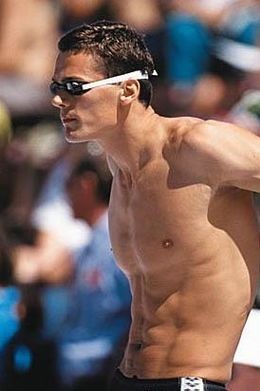Lessons from the ISL Pro Swim League
Success leaves clues. And there can a lot of value is studying someone that's at a level where we'd like to be. This can be true of watching a professional athlete compete and paying attention to what they are doing differently or at a higher level.
The ISL (International Swim League) has kicked off season two in Budapest, Hungary. The best swimmers in the world, including Kierra Smith from Kelowna, are competing as part of teams including the LA Current, which Kierra is on, as well as the newly formed Toronto Titans.
Last week we had a number of swimmers in for training while the ISL races were happening. So we put the races on the TV while they were training.
And it was interesting to see what the best in the world were doing differently than everyone else. For example, Caleb Dressel, Chad Le Clos, Sarah Sjostrom and Florent Manadou were better than the rest when it came to this aspect of the races. And the commentators were picking up on it.
Can you guess what it was?
It was how strong they were off the wall.
Dressel, Le Clos, Sjostrom and Manadou were surging ahead during the underwater portion of the turn. Or if they were slightly behind at the turn they were able to close this gap and catch the leader by the end.
So why were they better off the wall?
This can be summed up into three main things they are doing well which are:
- A strong push off the wall
- A seamless streamline position
- A strong and stable core
Let's look at each in more detail below.
A Strong Push Off the Wall
The turn is different than the start in that the feet contact the wall with motion as opposed to a static position for the start. When a swimmer comes off the wall effectively we see an efficient transfer of power with the push to propel them in the opposite direction. This is the combination of muscular power as well as setting the ankles-knees-hips to take advantage of the stretch reflex to 'jump' off the wall.
When the joints aren't set properly, or when there isn't adequate joint stiffness, the swimmers hits the wall more like a red tomato rather than a rubber red ball. The swimmers mentioned above all do a good job of loading up their muscular power, setting the joints to the right angles and exploding off the wall.
I remember last summer working with a swimmer from Ball State University, an NCAA Division 1 school. Anyways when Cassidy returned to university she sent me a proud text. During one of the practices the coach had them do a drill, 'furthest off the wall'. Cassidy was the best on her team for this test. As a distance swimmer, getting further and more quickly off the wall will result in faster times.
A Seamless Streamline Position
In swimming the body moves forward during the glide phase and not as much during the propulsion phase. For example, the winner in the 50 m at the Olympics typically takes the fewest strokes.
Being in a solid streamline position is even more important off the wall, and the start, when speeds are maximal. If a swimmer lacks overhead mobility at the shoulder, thoracic spine and/or lats this will limit the streamline position and further impair speed off the wall.
Maintaining a streamline position is even more critical at the end of races. This is when the body is under more stress and will typically resist being in a extended position. When a body is in pain it goes into flexion i.e. the fetal position. So at the end of the race swimmers really need to focus on getting long and overcoming the urge to get short.

Lastly, when we extend the limbs as in a streamline position, we are better able to engage the core. This leads to the next point.
A Strong and Stable Core
Reach overhead and pay attention to how much your core engages. Now try and reach another inch or two higher. Reach as high overhead as you can.
You should notice your core engages as you reach further.
With a stronger and more stable core the legs won't sink as readily meaning there is less drag behind the body. As well, when the body is in a stable position it rewards us with more mobility. When we lack stability we can't get into the same positions and our mobility is compromised.
So we can see how #2 and #3 above are related. If you lack the ability to move it is more difficult to engage the core. When the body lacks core stability it withholds certain ranges of motion to protect us.
This can feel a 'chicken and egg' type of scenario and leave young swimmers wondering what to address first? If this feels like you, leave us a comment below or send an email to athletetraining (at) shaw (dot) ca and we can guide you through the process.
When you subscribe to the blog, we will send you an e-mail when there are new updates on the site so you wouldn't miss them.

Comments